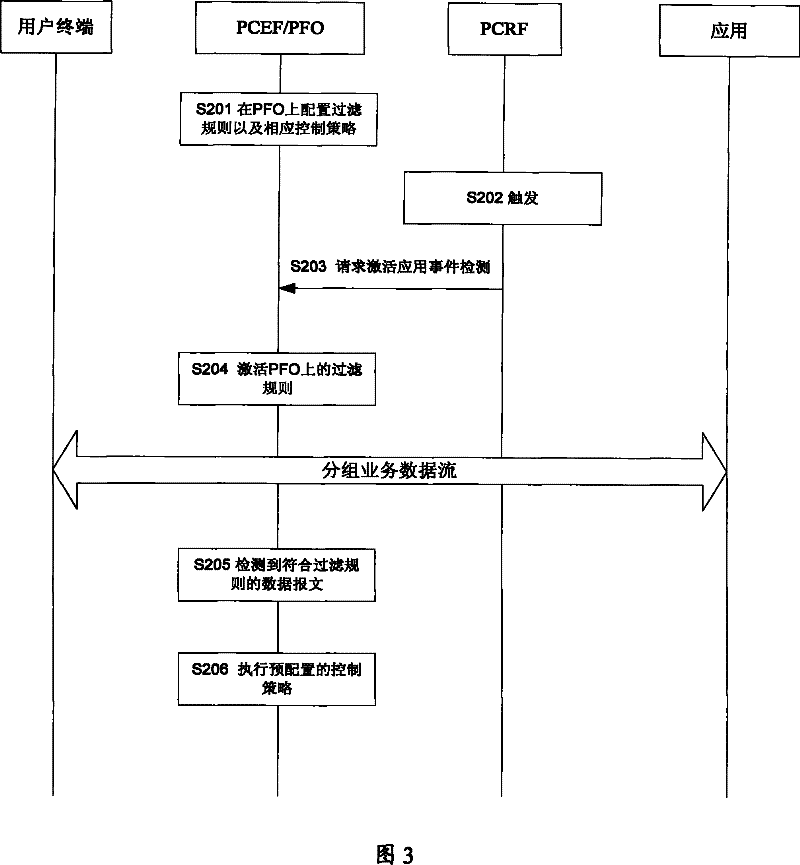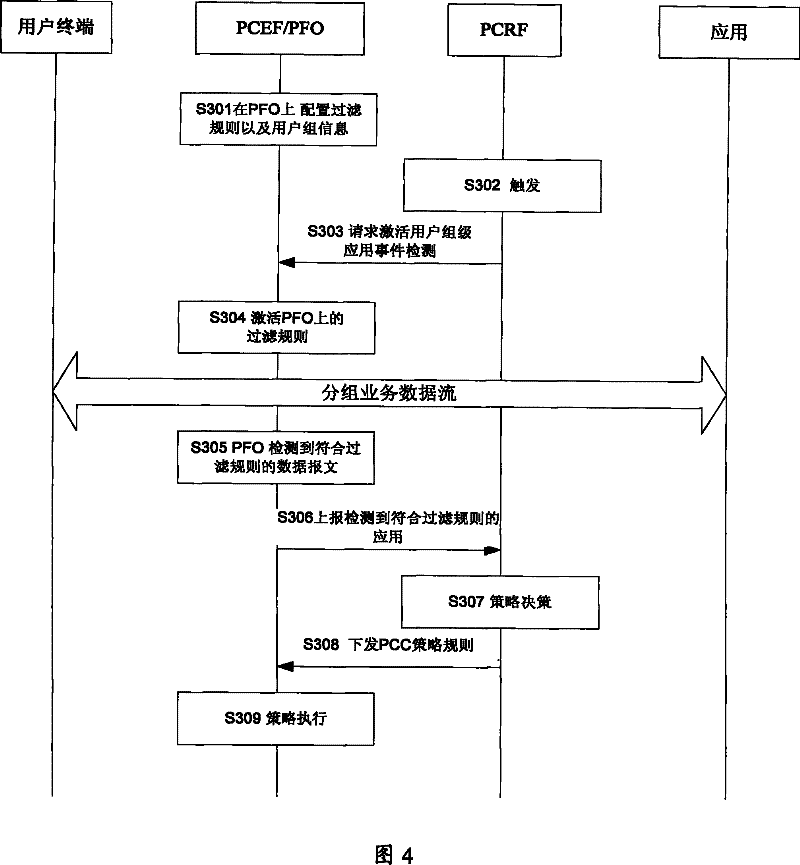Method and system for application event detection and functional entity for packet stream optimization
A technology of event detection and functional entities, applied in the field of communication, can solve problems such as unsatisfactory, complex maintenance and management, low efficiency of subscription/activation application event detection, etc., to simplify control, improve control efficiency, reduce detection management and maintenance complexity degree of effect
- Summary
- Abstract
- Description
- Claims
- Application Information
AI Technical Summary
Problems solved by technology
Method used
Image
Examples
Embodiment 1
[0079] Embodiment 1: implement policy control by using network system level policy.
[0080] For some restricted applications specified by network operators, PCC uses the same application event detection rules and adopts the same policy for all network users. In this embodiment, the PCEF and PFO integration architecture is adopted, and the filtering rules of network system level application events are configured on the PFO functional entity for all users using the functional entity. The filtering rules include the related information (such as IP quintuple), and configure corresponding control policies at the same time. After PCRF activates the application event detection rules at the network system level, once any user launches the restricted application, when the data packets of the restricted application pass through the PFO function, the application event detection rules at the network system level will detect the If the data packet matches the filter rule, the "closed" ga...
Embodiment 2
[0094] Embodiment 2: Realize PFO control by using user group-level application event detection rules (user groups are represented by user group identifiers)
[0095] In this embodiment, the PCEF and PFO integration architecture is used, the filtering rules and user group information of each application event are configured on the PFO, the PCRF activates the user group-level application event detection to the PFO, and after the PFO detects the application, Dynamically request the charging policy from the PCRF. The PCRF generates a policy rule according to the operator's policy and sends it to the PCEF. The PCEF charges the detected service data flow according to the policy rule.
[0096] Many users watch IPTV video-on-demand services (VOD) by paying monthly. The PCC architecture can use the same application event detection rules to detect the VOD services carried out by these monthly paying users, so as to adopt the same billing strategy. Taking the VOD application as an exampl...
Embodiment 3
[0113] Embodiment 3: Utilize user group-level policies to implement policy control (user groups are represented by user lists)
[0114] Operators can divide users of the same level into a user group, and implement the same QoS control policy for all users under the user group to carry out services.
[0115] In this embodiment, the PCEF is separated from the PFO architecture, and the PFO is an independent functional entity. The PCRF activates user group-level application event detection to the PFO. After the PFO detects relevant applications according to the application event detection and filtering rules issued by the PCRF, Dynamically request the QoS policy from the PCRF. The PCRF generates a policy rule according to the operator's policy and sends it to the PCEF. The PCEF performs QoS control on the detected application according to the policy rule. Taking the online game application as an example, the process of using the user group-level application event detection rules t...
PUM
 Login to View More
Login to View More Abstract
Description
Claims
Application Information
 Login to View More
Login to View More - R&D
- Intellectual Property
- Life Sciences
- Materials
- Tech Scout
- Unparalleled Data Quality
- Higher Quality Content
- 60% Fewer Hallucinations
Browse by: Latest US Patents, China's latest patents, Technical Efficacy Thesaurus, Application Domain, Technology Topic, Popular Technical Reports.
© 2025 PatSnap. All rights reserved.Legal|Privacy policy|Modern Slavery Act Transparency Statement|Sitemap|About US| Contact US: help@patsnap.com



